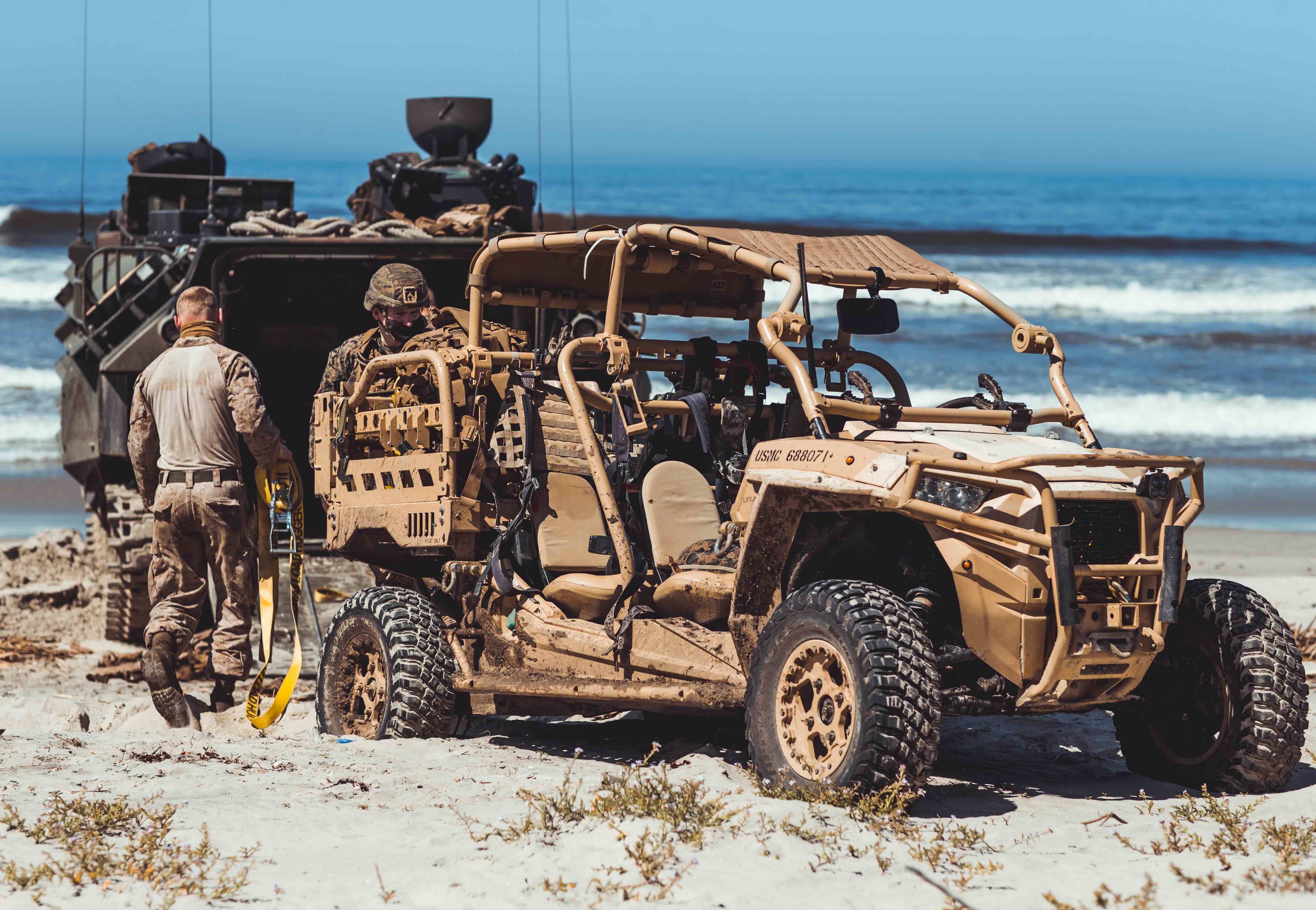At the National Defense Industrial Association’s Tactical Wheeled Vehicles conference in Charlotte, North Carolina, Vincent Grizio, the program manager for the family of special operations vehicles, reported that SOCOM’s ground vehicle fleet has decreased from 3,400 to 3,200 units over the past year. He anticipates this number will drop below 3,000 by early 2025. This reduction aligns with the command’s strategic pivot from its longstanding counterterrorism missions to addressing great power competition, necessitating different capabilities and capacities in its operational tools.
SOCOM is phasing out older models, such as the up-armored Humvee, replacing them with the Joint Light Tactical Vehicle (JLTV) and the improved Alpha models of the MRZR-D, provided by Polaris Defense and the Marine Corps. These smaller, lighter vehicles are crucial for compatibility with various military aircraft, enhancing the transportability and reach of special operations forces.
Grizio highlighted that special operations vehicles are equipped with unique kits for clandestine missions, which may require stealth and endurance behind enemy lines. These modifications often include advanced communication systems and weapon systems enhancements.
In terms of technological advancements, SOCOM is exploring hybrid-electric vehicles and autonomy in vehicles. The Naval Surface Warfare Center Crane Division has provided two hybrid-electric models for experimental use to define future requirements. Additionally, SOCOM is testing autonomy at level 5—the highest level of vehicle automation—on platforms like the Army’s Small Multipurpose Equipment Transport and its own Light Tactical All-Terrain Vehicle. This level of autonomy aims for full automation without requiring human intervention, which could detract from other mission tasks.
Expanded Coverage:






